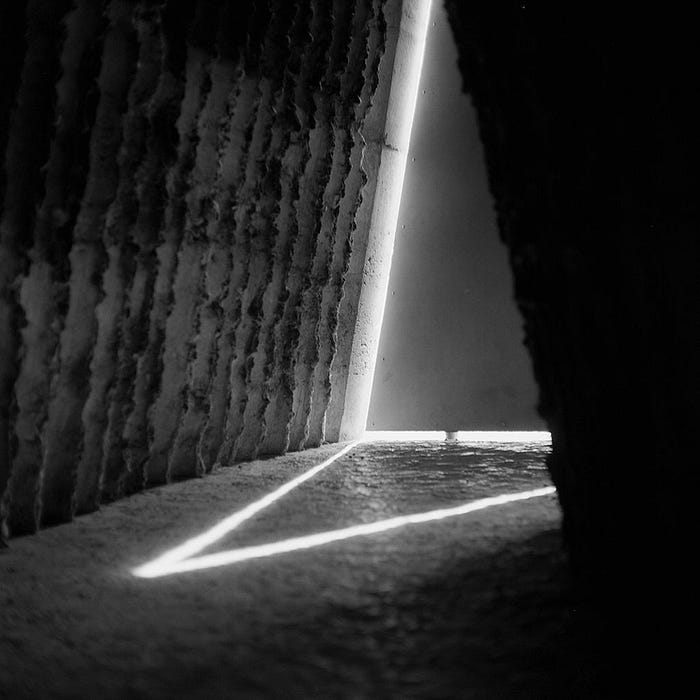
Phenomenology is a short brief of our conscious experience. It’s an experience of the built environment, how space is transformed by a different element like people, shops, cafe. When a person asks you to describe India, then u have an image of holy cities, crowded places, hawkers on both sides of roads, narrow streets and its multi-dimensional culture.
By Atmospheres- Peter Zumthor, put some light on the exchange, a give and take, between a building and its environment. Zumthor emphasis the sensory aspect of architecture. This book is an insight into architectural quality. He describes the notion of the environment, by defining nine basic things to achieve the ideal relation between building and surrounding.
He commences the talk with the magic of real, How do people perceive things in reality. A process of individual observation and sensual thinking about people behaviour, interaction pattern and their relation with other things. In his work, he always tries to end with the same effective product as a composer in well-composed music. But he also describes how this task of creating architectural atmosphere comes down to craft an graft.
The Body of Architecture, architecture end products. spaces are the assemblage of the different membrane, material. The Capability of Materials with one another leads to the appearance of space ie. real appearance.
Relation of materials with each other, every material with endless possibility. So this capability is an extraordinary sense of presence and understanding the nature of individual materials which comes with the experience and time.
In the third and fourth chapter, he illuminates the physiological aspects of architecture.
He narrates, Interiors are like large instruments, collecting sound, amplifying it, transmitting it elsewhere. As with The sound of a space, he describes the science of sound with the shape of space and reflection with surfaces of the material.

The temperature of a space, he draws to the heat extraction character of each material which gives individual effect to space. By pulling an example of his building Swiss pavilion, he explains the role of wood as an insulating material, how the pavilion remains cool as a forest when it was hot outside, and when it was cool the pavilion was warmer than it was outside, although it was open to the air. Every building has its own individual way to adopt its surrounding which is ruled by the material composition and their reaction.
During my internship in Shimla, I stayed in an old traditional house filled with all antic furniture’s, carpets, and artefacts. That was like a dream house to live in, as stepping up on the landing I find a wooden shelf stacked by book, some of them had a yellow page and some white. All these tiny details always moved me so while coming across this chapter Surrounding objects I did understand my feeling and what moved me there. Here, he describes all the tiny things people create around them while living in a place. Its a future of space that happens without architects.

Between composure and seduction, tells of his perception about movements in architecture, describing is as a temporary art, like music which is defined by the movement of people around it. How space can be shaped as self-drifting, discoverable, and defined by a mood that has less to do with directing people than seducing them. And out of his, all work Thermal Bath, silhouettes in the best way.
While speaking of Tension between interior and exterior, he describes the interior space as private space and exterior talking to streets, square and other buildings around. Something that can be inside and outside, movement across, is an imperceptible transition from being enclosed to openness.
These relations leading us to the level of intimacy, it refers to the various aspect- size, dimension, scale, masses and gravity of things. He describes how a building speaks of themself. Sometimes they stand too grand and sometimes too small or the same as you. How these spaces ignite different emotion inside us-forgotten, exalted and liberated, intermediate, letting us feel both the extremes.

The closing insight-The light on things, tell us about the appearance of thing in light. Where and how the light fell.The nature of the shadow, the way the surfaces were dull or sparkled or had their own depth. He describes the reflection of light from surfaces and ideas of planning light in a space as a medium of hollowing out the darkness from a mass and seeping inside.
Architecture should be like free space, permeating people to live in, creating memories. Surrounding atmosphere to be felt rhythmic and coherent while staying within the boundary.
“Architecture is an art when one consciously and unconsciously create aesthetic emotion in the atmosphere and when this environment produces well-being.”-Luis Barragan.
If you found this valuable and wanna listen more from me then stay connected. You can find me on Twitter and my graphic work Minimal_shades and Download my work.
